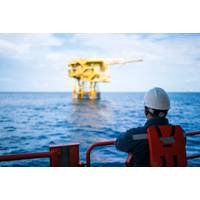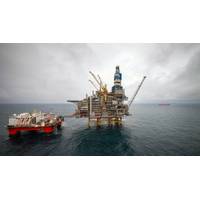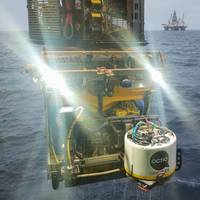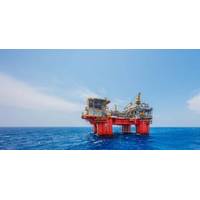
SLB Launches New Well Completions Tech to Boost Production
of ownership of an asset.Electris completions digitalize control of the entire productive area of the wellbore, providing real-time production intelligence across the reservoir.This enables operators to predict, adapt and act with confidence in response to dynamic production conditions - improving reservoir management over the life of the well and accessing reserves that conventional systems leave behind.“Electris completions take reservoir management to the next level - making it possible for operators to get more out of their assets with fewer requirements for costly well interventions.“With

Viridien, TGS and Aquila Holdings Deliver Utsira OBN Reprocessing Project
of the region,” said David Hajovsky, Executive Vice President of Multi-Client at TGS.“The new time-lag FWI model and resulting high-resolution images improve fault interpretation and reservoir characterization, enabling operators to make more informed exploration, production, and reservoir management decisions,” added Dechun Lin, EVP, Earth Data, Viridien

AGR Secures Frame Agreement with Petoro for Oil and Gas Work
extensive expertise from IOR/EOR with reservoir modelling, well integrity and well control, concept and production technology, field development and verification. This competence, combined with in-depth experience from the NCS, enabled us to win this frame agreement,” said Erik Lorange, VP Reservoir Management at AGR, which is part of Oslo-listed energy and marine consultancy group ABL Group

Shearwater to Monitor Production at Equinor’s Two Oil and Gas Fields
two 4D monitoring projects from Equinor for the Mariner field in the UK North Sea and the Heidrun field in the Norwegian Sea offshore Norway.Shearwater will deploy its Isometrix technology for both surveys, applying 4D seismic monitoring to detect reservoir dynamics over time, for optimizing reservoir management and enhancing production efficiency.This will be the fourth Isometrix deployment for Mariner, complementing previous monitor surveys in 2020 and 2022, and the third for Heidrun, following surveys in 2018 and 2021.The surveys are expected to take two months and will be carried out by the SW

Shell Taps OCTIO for Geophysical Monitoring at Ormen Lange Field
refine field recovery strategy and increase gas production," OCTIO said."OCTIO gWatch surveys complement or replace 4D seismic at 1/10 of the price and 1/3 of the delivery time. With gWatch, customers reduce the frequency of, or completely remove the need for, 4D seismic surveys, improve reservoir management, and optimize subsea infrastructure across the shelf and deepwater gas fields," OCTIO said of its gWatch service.License partner companies at the Ormen Lange field are Shell (operator), Petoro AS, Equinor Energy AS, INEOS E&P Norge AS, and Vår Energy AS.Ormen Lange has been

Reach Subsea Acquires OCTIO from Equinor
solutions and data offering will be highly complementary to Reach Subsea and will offer significant benefits to the clients Reach Subsea serves. We believe there is enormous potential through the combination of our organizations to support clients in enhancing their field recovery rates, improve reservoir management and optimize subsea infrastructure through our services and data insights offering.”“Equinor Ventures has supported the development of OCTIO’s technology, and we have seen substantial cost savings from applying the company’s solutions to our assets, including monitoring

Silixa Claims 'World's first' as it Installs Distributed Acoustic Sensing (DAS) System at BP's Gulf of Mexico Field
system with eight new wells tied into the current Atlantis platform, 150 miles south of New Orleans. "The engineered fibre optic system enables high-definition seismic data acquisition along the entire subsea wellbore. This allows seismic acquisitions at a lower cost, enabling better reservoir management," Silixa said.The Carina Subsea system has been installed in two wells, and installation is continuing over the rest of the field." A zero offset DAS VSP was acquired to validate coupling and signal to noise characteristics and showed excellent data quality. Subsequent production

Sonardyne Deploys 'New Breed' of Subsea Sensors at Shell's Ormen Lange Field
challenge of creating instruments that were sensitive enough to measure 1cm/year of vertical movement. With this latest generation of Fetch AZA, we have achieved that goal and unlocked the benefits of using this technology to detect extremely low levels of seafloor subsidence as part of proactive reservoir management programmes.”Sonardyne’s Fetch AZA sensors are low power, allowing for long endurance deployments, and provide time-stamped data, which is often critical to commercial and scientific objectives. With their in-built data storage and high-speed modem capacity, they can support data

Seabed-to-Shore Data Delivery Operation Completed for Norske Shell
a long-term seabed monitoring campaign.The Fetch PMTs accurately collect pressure, temperature and inclination data at the seafloor, at pre-programmed intervals. Using this data, any vertical displacement of the seabed can be calculated. The data will help Norske Shell to proactively inform its reservoir management strategy.Sonardyne’s long-life Fetch PMTs incorporate a high-speed acoustic modem, which allows stored data to be extracted at any time, wirelessly through the water, on demand. On this mission, the XO-450 was equipped with a compatible Sonardyne acoustic transceiver attached beneath

 December 2025
December 2025





